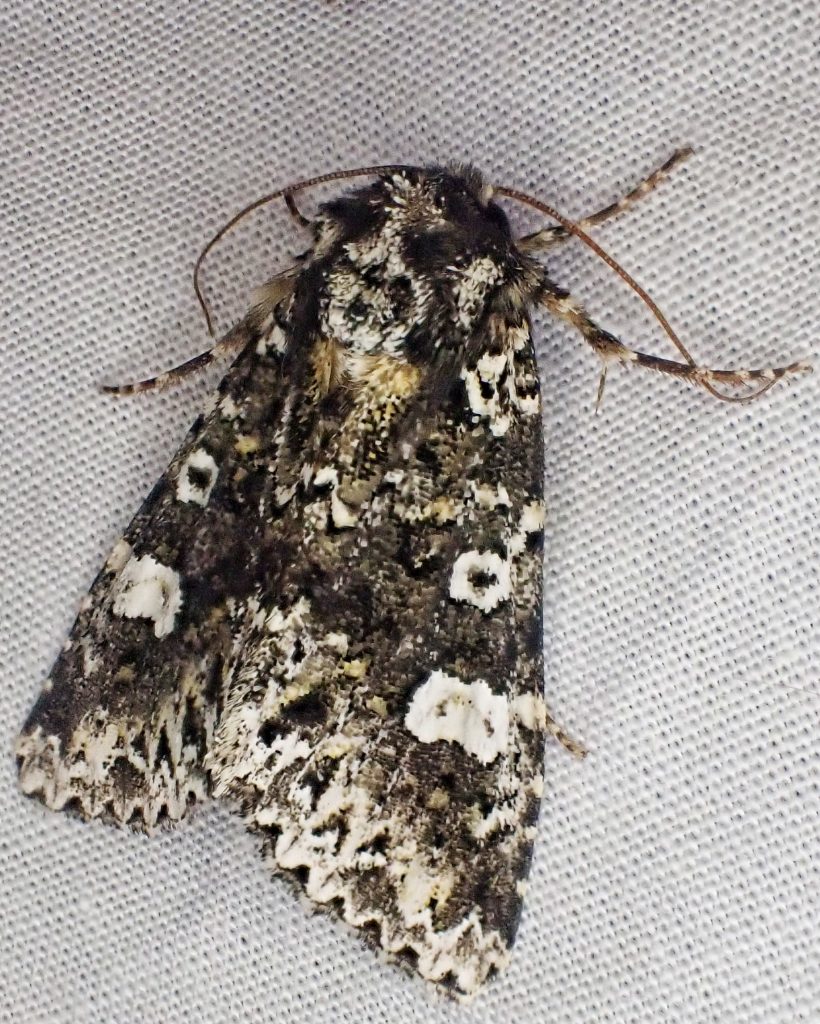
It seems odd to me that I don’t see this species more often, because they have a such a wide variety of larval host plants, but this single moth that I found on the ‘7th Night of Moth Week was the only one I saw during moth week, and that was the first one I’d seen in a couple years. It’s too bad, because they are quite a handsome noctuid moth.
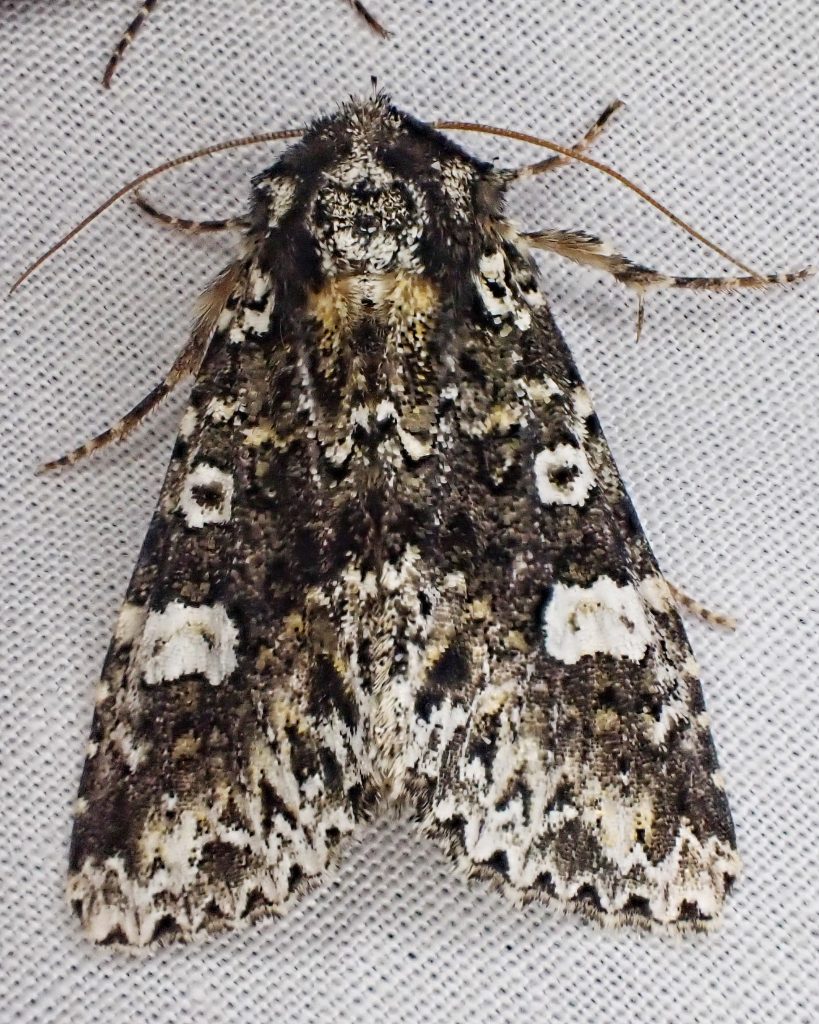
Description– “wingspan 29-40 mm…Adult: forewing ground color dark gray or black, providing good contrast against the following four areas of white: a small basal patch, small orbicular spot, large reniform spot, and broad wavy terminal line; reniform spot with wavy basal margin and curved black line in center; all-dark melanic specimens fairly common in Ontario [Jeff Crolla, per. com.]hindwing gray, darker at outer margin; Larva: two forms – either light green or light brown; both forms have darker diagonal markings dorsally and ventrolaterally, and thin whitish dorsal line; head dark with 3 white dorsal lines; 8th abdominal segment humped, with dark lateral patch” Species Melanchra adjuncta – Hitched Arches – Hodges#10292 – BugGuide.Net
Similar species– “This species can usually be identified by its dark blackish forewing with pure white-filled reniform spot and zig-zag white pattern on the distal forewing. Species of Papestra are also black and gray but the color is usually more blue-gray, lack the zig-zag pattern near the margin, and usually have a pale blue-gray patch near the anal angle. Mamestra configurata is also similar, but it is lighter olive-brown with red-brown areas and a light olive green area medial to the subterminal line. It is more common in dry habitats, especially near agricultural areas, whereas M. adjuncta flies in forests.” PNW Moths | Melanchra adjuncta
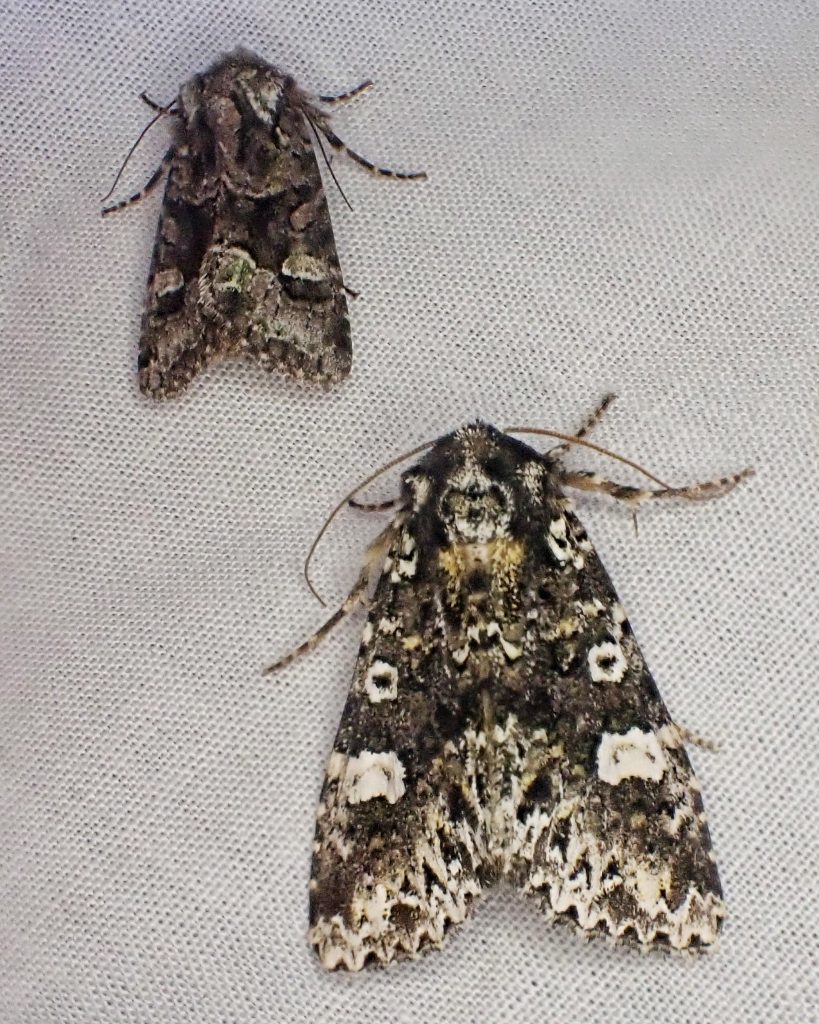
Habitat– “This species is widely distributed in moist forests throughout much of North America. In the Pacific Northwest, it is relatively uncommon in mixed hardwood-conifer forests and ponderosa pine forests of the Rocky Mountain region and along the east slope of the Cascades at middle elevations. However, it is moderately common in coastal rainforests and mixed hardwood-conifer forests along the west slope of the Cascades at low to middle elevations.” PNW Moths | Melanchra adjuncta
Range– “This species has a wide range in North America. In the East it ranges from Nova Scotia and Manitoba to North Carolina and Nebraska. The range extends south to Utah in the Intermountain Region. It is not listed as occurring in California in McCabe (1980)…Melanchra adjuncta occurs in forests from southern British Columbia south throughout our region, including west of the Coast and Cascade Ranges. It is absent from dry steppe habitats.” PNW Moths | Melanchra adjuncta; Range map at iNaturalist Observations · iNaturalist
Eats– “larvae feed on leaves of herbaceous plants (alfalfa, asparagus, bracken, clover, dandelion, goldenrod, milkweed, plantain, trefoil) and less commonly on woody plants (alder, birch, elder, elm, gooseberry, honeysuckle, willow).” Species Melanchra adjuncta – Hitched Arches – Hodges#10292 – BugGuide.Net
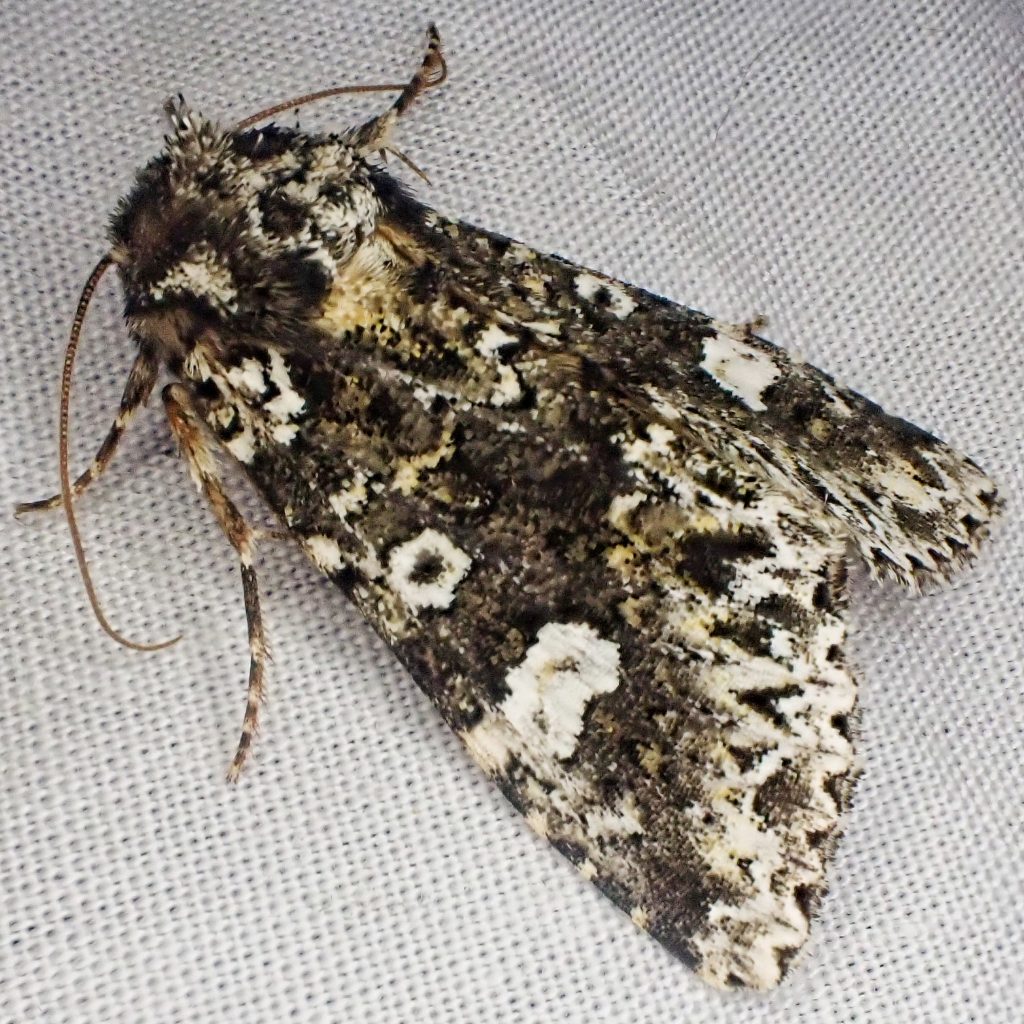
Eaten by– Presumably a host for parasitoids in Hymenoptera and Diptera, and probably preyed upon by insectivores of all classes, but I can find nothing specific for this species.
Adults active– Mid May into August
Life cycle– BugGuide says there are 2 generations, but in our region there is just one peak in July, so it appears to be univoltine here; based on the timing of the flight they must overwinter as eggs or early instar larvae.
Etymology of names– Melanchra is from the Greek words for ‘black color’, and refers to the ground color of members of this genus. The specific epithet adjuncta is from the Latin words for ‘toward joining, but I cannot ascertain what joining Guenée was referring to.
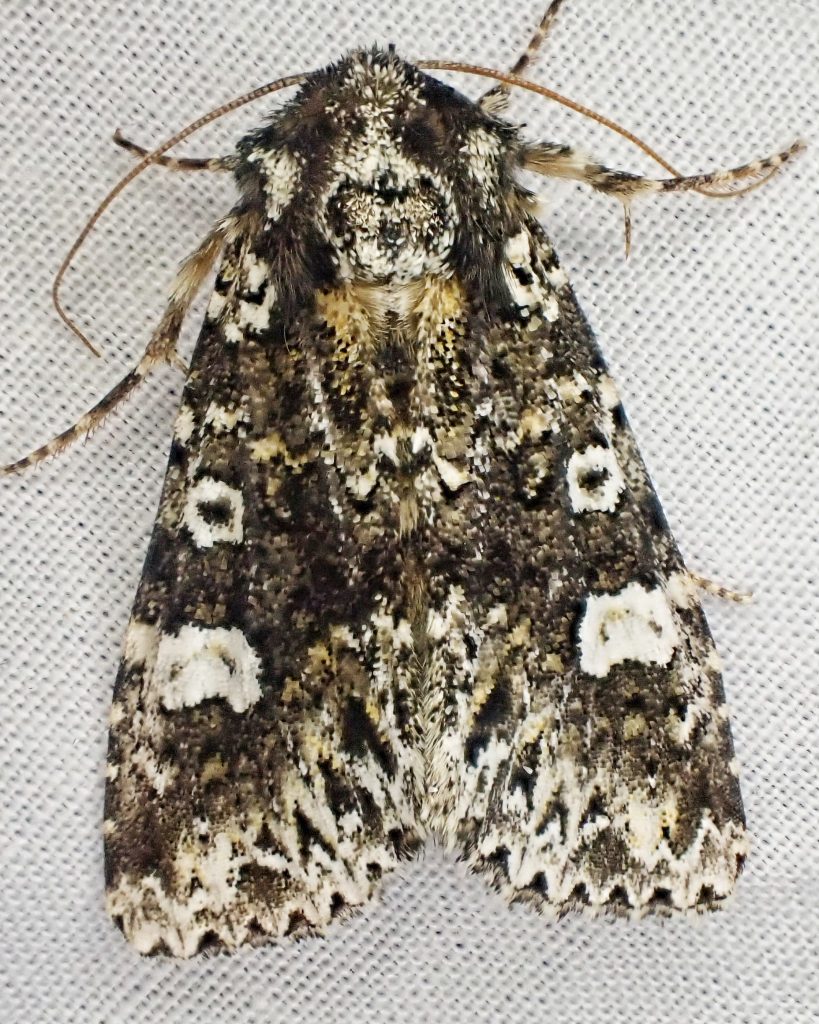
PNW Moths | Melanchra adjuncta
Species Melanchra adjuncta – Hitched Arches – Hodges#10292 – BugGuide.Net
http://mothphotographersgroup.msstate.edu/species.php?hodges=10292